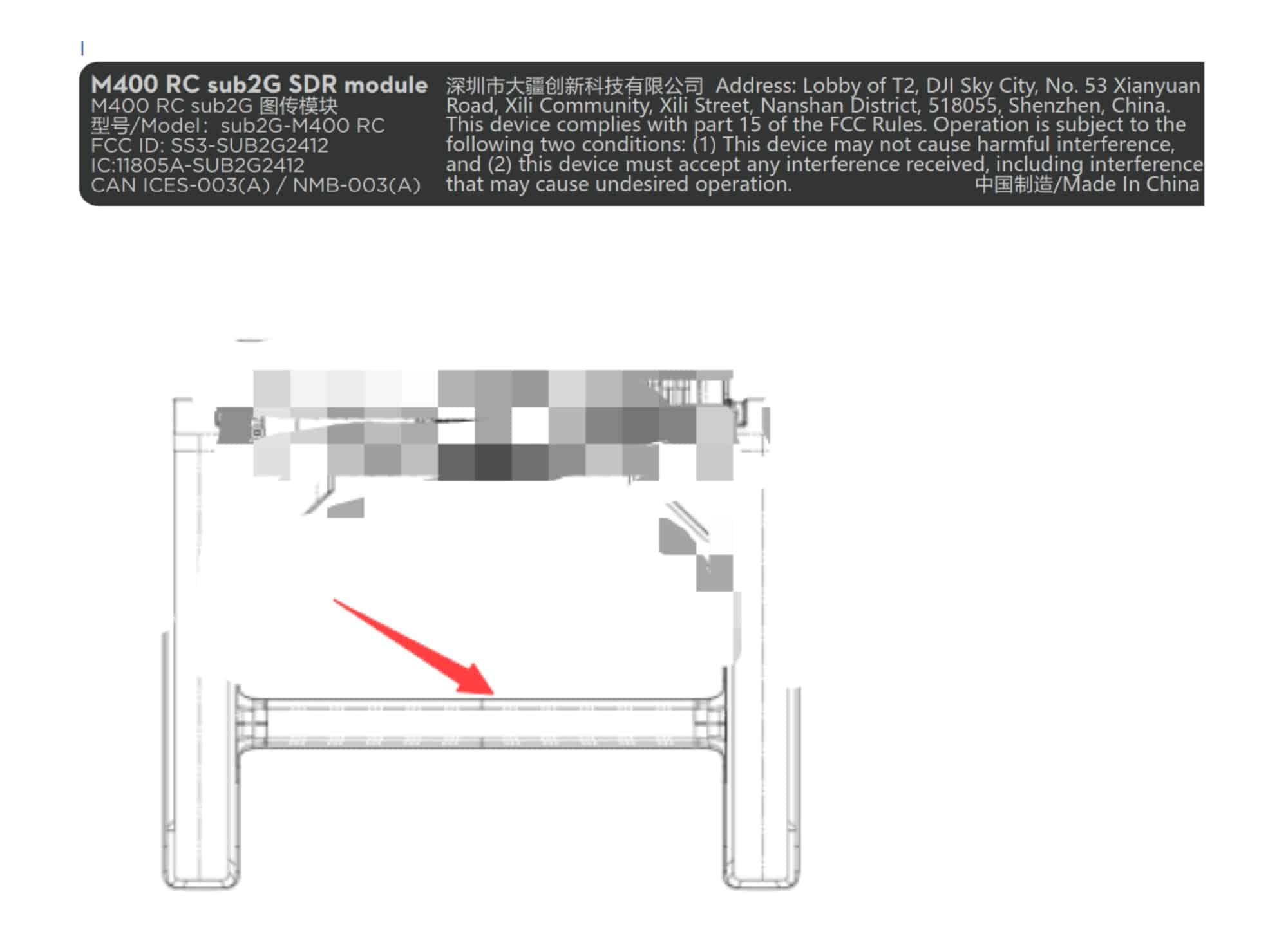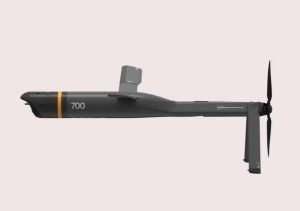Unraveling the Mystery of the DJI Matrice 400’s Sub-2 GHz Module
The drone industry is abuzz with anticipation as DJI gears up to introduce the Matrice 400, a robust enterprise drone recently hinted at through various leaks. Among the captivating discoveries are the FCC filings revealing a noteworthy component—the “M400 RC sub2G SDR module” with the FCC ID SS3-Sub2G2412. Documented on November 20, 2024, this module signals a promising enhancement to the drone’s communication infrastructure, yet its specific function remains ambiguous, prompting speculation from both professionals and enthusiasts.
The Technical Breakdown
The designation “M400 RC sub2G SDR module” points to a radio communication component associated with the Matrice 400’s remote control system. As indicated by the “sub2G” label, it operates below 2 GHz—a frequency range recognized for its long-distance transmission capabilities because of its obstacle-penetrating characteristics. The integration of Software-Defined Radio (SDR) technology hints at adaptability, allowing the module to adjust across various frequencies or protocols. FCC documentation confirms its operation within the 902.8 to 927.2 MHz band, consistent with sub-2 GHz standards like the 900 MHz frequency utilized in DJI’s Datalink Pro.
A partially redacted technical diagram indicates a marked section, potentially pointing to a crucial hardware element, although precise specifications remain unexplained. The FCC ID “SS3-Sub2G2412” raises an intriguing question, as “2412” might suggest 2.412 GHz, which is outside the sub-2 GHz bracket. This possibly indicates dual-band functionality or could simply be a mislabeling, warranting further investigation. Certification records, including a designated agent letter for DJI Research LLC and testing authorization for SGS-CSTC Standards Technical Services Co., Ltd., validate compliance with U.S. Part 15 regulations and Canadian ICES-003(A) / NMB-003(A) standards, indicating preparedness for market launch.
Industry Context and Evolution
DJI’s enterprise drones, such as the Matrice 300 RTK and 350 RTK, rely on 2.4 GHz and 5.8 GHz for control and video transmission, offering significant bandwidth but limited range. The introduction of a sub-2 GHz module represents a strategic shift, likely aimed at supporting beyond visual line of sight (BVLOS) operations—critical for tasks like infrastructure assessments or emergency responses. The 900 MHz band, previously used in DJI’s datalink technology, facilitates this transition towards extended operational range, aligning with an industry trend focused on autonomous and long-endurance missions.
This advancement corresponds with recent alterations in FCC regulations, which have opened the 5 GHz band for drone operations. However, sub-2 GHz bands continue to be essential in regions with stricter regulations, providing a versatile avenue for global implementation. The module’s SDR capabilities could allow for frequency hopping, ensuring compliance across varying markets and improving reliability in interference-prone areas.
Practical Implications
The potential applications of this module are fascinating. It could serve as a primary link for remote control, optimizing range over bandwidth for BVLOS missions. Alternatively, it might function as a secondary link, complementing the 2.4 GHz or 5.8 GHz systems to ensure continuity in adverse conditions. Another scenario includes data transmission similar to DJI’s existing datalink technology, which supports telemetry or third-party payloads—an idea that has garnered attention in recent discussions.
Furthermore, the module might enhance transmission distances or enable additional payloads, proving beneficial during Search and Rescue operations or extended missions. While the designation “RC” leans towards control rather than video function, the SDR technology offers flexible use cases. For drone professionals, this module could broaden operational potential, though its compatibility with current Matrice systems is yet to be validated.
Regulatory and Market Considerations
The regulatory approval process is currently in motion, with DJI naming U.S. representatives and empowering testing facilities—an initiative that could shape the module’s market deployment. Utilization of the sub-2 GHz band necessitates careful consideration of regional limitations, especially in Europe and Asia, where 900 MHz availability may differ. DJI’s success depends on maintaining a balance between compliance and performance—a complex task given the module’s innovative nature.
The market impact could be substantial, particularly among enterprise users, such as utility firms or public safety organizations, who may seize the opportunity for budget-friendly BVLOS operations. Competitors, including Autel Robotics and Skydio, may respond with similar advancements, intensifying the competition for long-range capabilities. However, without clear specifications, the question remains as to whether the module will validate its development investments or cater to a variety of operational demands.
DroneXL’s Take
The “M400 RC sub2G SDR module” holds the potential to enhance the DJI Matrice 400, possibly transforming long-range drone operations. Its functionality within the sub-2 GHz range and SDR adaptability hints at a progression towards BVLOS and payload integration, though the discrepancies in naming and redacted details keep its role partially undefined. The industry stands to gain from improved reliability and transmission range, though the ultimate success will hinge on regulatory alignment and practical application.
This module signals DJI’s commitment to advancing enterprise markets with innovative communication technologies, yet the true effects await further confirmation.
We’d love to hear your thoughts! Do you believe this module is a groundbreaking development for BVLOS applications or just a marginal enhancement? Share your viewpoints in the comments below!
For more insights, explore further discussions around DJI Rumors and industry leaks on DroneXL!













